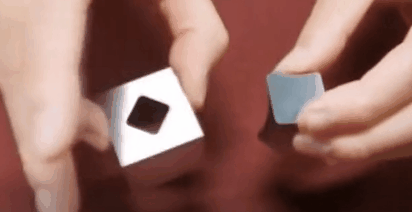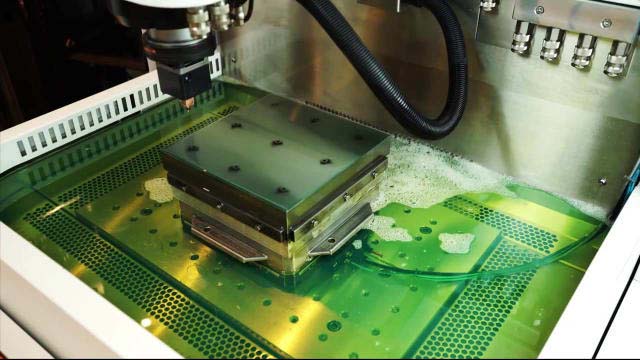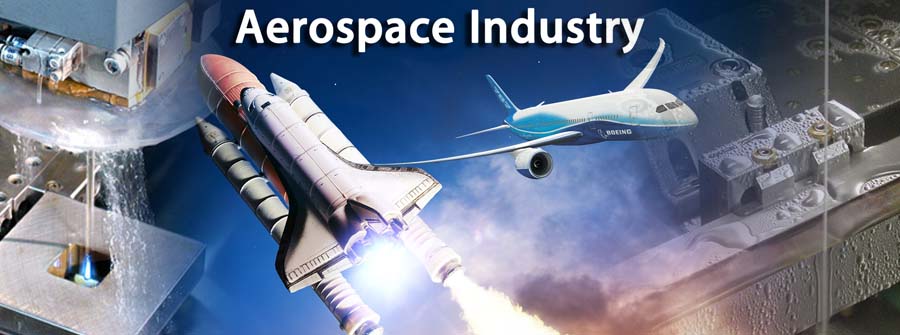The relationship between electrical discharge machining (EDM) and the aerospace industry can be traced back decades. It began with Project Mercury (1958-1963), which sent Americans into space. Modern EDM machines have undergone major changes from their predecessors. Now, detailed tests have shown that the EDM machine will not leave a measurable heat-affected zone, and will produce a recast layer of less than 0.01mm. Microcracks are almost non-existent. These machines can produce parts with a surface finish of 0.5μmRy, tolerances in the sub-micron range, and hardly damage the surface of any parts. Today, EDM has been reintroduced as a viable manufacturing process.
As we all know, EDM machining is a popular auxiliary processing technology, which is widely used in the machining of aluminum parts and can realize the machining of complex parts in the rapid manufacturing industry.
Have you watched this video? Someone connects the two parts and they match evenly, looking like a component without any visible dividing lines. Do you want to know how to achieve such perfect accuracy? Well, let me tell you, this is done by electrical discharge machining (EDM machining). This is a relatively new unconventional high-speed machining process, which provides us with many new technological opportunities.

EDM Machining Technology Introduction
As you might expect, the physical basis of EDM is electrical discharge. When two conductive parts are separated by a dielectric liquid and are in a high voltage state, current will accumulate and discharge at a specific moment. Due to this discharge, a small part of the “positive” part is strongly heated to the point of evaporation. That’s it. As you might have guessed, the blank is connected to a positive charge and the electrode is connected to a negative charge. Multiply the number of discharges by one million times to create an EDM. Of course, materials and liquids, EDM parameters and nuances are different, but the basic principle is very simple.
Various EDM
- Sinking EDM
- Wire EDM
- EDM milling
Sinking EDM
It involves the use of pre-machined electrodes with the desired geometry. It is immersed in the blank and forms a cavity or specific hole. .
Wire EDM
This is a common EDM processing method. We use an elongated wire between the two nozzles. Two nozzles are located above and below the blank, and then move the wire along the required trajectory, so that we can cut any shape on the blank. We only need one entry point.
EDM Milling
EDM milling is a new method similar to ordinary milling. It involves a rotating tool that follows the path we programmed into the CNC EDM machine. It has a cylindrical shape, so it does not have any sharp edges. We first connect the cylinder to high voltage and then heat it up. This causes the metal blank to evaporate along the path of the cylinder.

Advantages of EDM
Now that we know how the process works, let us discuss how this unconventional method of material removal actually benefits us? Facts have proved that this method is very useful and has many advantages. Let us list some of them, and based on these advantages, form the main industries where EDM components can find the best use.
The hardness and machinability of the material of the part are not important. This is one of the strongest advantages of EDM machining, because it can process even the hardest and most complex alloys. The best examples are nickel and titanium alloys used in the aerospace industry. If you want to mill them, they will be painful, but EDM processing is relatively easy.
The precision and surface quality are outstanding. This is true, because the final quality of the part depends on the quality of the electrode of the sunken EDM and the quality of the wire of the wire cut EDM. Both can be made very finely because they are mainly made of soft but conductive materials.
There is no thermal transition in the material. The heat generated during the discharge is very accurate, but the area is very small. It is cooled by the insulating liquid around the parts within a few seconds, so almost no heat is generated during the processing. Therefore, there is no thermal deformation or excessive carbon on the surface of the material.
There are no remaining tensions. The material evaporates. It will not be cut off, nor will it be punched to the desired configuration. This means that there is no cutting force at all, which eliminates any form of internal tension that always exists after conventional machining. Without these tensions, the parts will not bend after processing, and their accuracy and quality will be higher.
Huge potential for automation and packaging processing. It is easy to program the wires using CNC EDM machines. You can even rotate and tilt the machined part. If multiple parts are required, the blanks can be welded to each other and then cut together with the wires.
EDM In The Aerospace Industry

The advantages of EDM make it very suitable for the aerospace industry. Rockets and airplanes are famous for their high temperatures and complex parts. Aerospace parts also require extremely high precision and excellent surface finish. So, what can be made with EDM?
- First, the compressor impeller. It is a complex part with thin wall features. You can use wire EDM or countersunk EDM of almost any material for processing.
- Turbine rotor disc. This is another part that the aviation industry usually requires. It has a fir-shaped hole into which a blade can enter. Its complex shape makes it very suitable for broaching. Broaching is an expensive method that is only feasible in mass production. Fortunately, EDM processing is possible for small batch processing.
- Stator parts. The stator is an important part of a gas turbine engine. They require complex rings with specific channels for fuel and gas. We usually use nickel alloys that are difficult to grind to make them. Fortunately, EDM processing is a vital part of the aerospace industry.
- Turbine blades. We can use EDM processing to form them. Through EDM, we can get first-class surface finish. This saves us a lot of time and energy. Sometimes, we cannot produce airfoil blades through EDM processing. Fortunately, its root can be in 90% of the cases.
EDM Service In SANS Machining
For EDM service, we specializes in EDM these core processes:
Wire EDM, Sinker/Ram EDM, Small Hole EDM, Small Hole Popping, Fast Hole EDM, Micro Hole EDM, Wire EDM Production and Prototypes etc.. When you absolutely need precision made parts or custom fabrication, SANS is your best source. It’s part of our total customer service commitment.
SANS Machining is concentrated on CNC machining manufacturing, prototype machining, low-volume manufacturing, metal fabrication, and parts finishing services, provide you the best support and services. Send Us Inquiry Now


